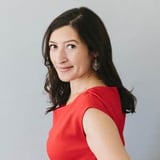Summary
When introducing DesignOps as a new function to an organization, the first few months are critical as you set the stage for how the organization familiarizes itself with your new team. In this session, Brennan will cover how DesignOps can partner with other functions, how to pick the right programs to tackle first, and how to measure a new team’s success. He will showcase tools that are useful to help establish your team’s newly formed brand within your organization.
Key Insights
-
•
Designers at Intuit spent only about 37% of their time on actual design work before design ops were introduced.
-
•
Adding one design program manager (DPM) to a team increased designers' design time from 15 to 20 hours per week, more than adding another designer would.
-
•
DPMs report directly to design ops leadership rather than individual design managers, enabling them to act as trusted mentors and improve team communication.
-
•
Communication gaps and duplicated work were primary challenges prompting the creation of design ops in a large company like Intuit.
-
•
The Design Ops Menu allows DPMs to cherry-pick operational tasks tailored to their team’s unique needs instead of taking a one-size-fits-all approach.
-
•
Blocking dedicated 'maker time' on calendars significantly improves designers’ ability to focus on actual design work.
-
•
Global expansion introduced new complexities such as cultural and timezone differences that design ops helped address by sharing best practices across offices.
-
•
Trying to standardize too many tools across teams created resistance; flexible tool usage with strong communication was more successful.
-
•
Allocating DPMs to design teams unwilling or unprepared for the role created more confusion than benefit.
-
•
Design ops initiatives positively impacted design talent retention, increasing average tenure from 1–2 years to 2–4 years after DPM introduction.
Notable Quotes
"We hire these people full time to be designers, and they were only spending about three hours per day actually designing."
"A design program manager is like air traffic control making sure all the planes land in the right place."
"Instead of adding more tools, we focused on removing unnecessary ones to reduce overhead."
"Having DPMs report separately from design managers creates a therapist-like safe space for designers to share issues."
"The design ops menu is not a buffet; teams cherry pick what they actually need."
"Maker time was the most difficult project I’ve ever handled, but it made a huge difference."
"Allocating a DPM to a team that didn’t want one caused more confusion and extra headcount."
"Retention went up because designers had more time to do what they loved: design."
"We learned that hiring for the specific design team’s needs works better than a one-size-fits-all DPM approach."
"Global mindset training includes simple things like teaching when to use email versus Slack given time zone differences."
Or choose a question:
















More Videos

"Diversity is beyond just the right thing to do. Our teams must reflect the world we’re designing for."
Doug PowellClosing Keynote: Design at Scale
November 8, 2018

"Middle schoolers might ask you tough questions about release forms and how their data will be used."
Mila Kuznetsova Lucy DentonHow Lessons Learned from Our Youngest Users Can Help Us Evolve our Practices
March 9, 2022

"Evan actually spent less than 15 minutes on the essay, and instead of working on homework, he was writing a letter to his significant other back home in Detroit."
Sarah GallimoreInspire Progress with Artifacts from the Future
November 18, 2022

"We never compromise on the business goals, but how we achieve them can be flexible and pragmatic."
Lada Gorlenko Sharbani Dhar Sébastien Malo Rob Mitzel Ivana Ng Michal Anne RogondinoTheme 1: Discussion
January 8, 2024

"Who deals with chaos, ambiguity, and disruption best? It’s us, design operations humans."
Alnie FigueroaThe Future of Design Operations: Transforming Our Craft
September 10, 2025

"Mixed methods research, combining qualitative and quantitative, gives the fullest understanding of customer experience."
Landon BarnesAre My Research Findings Actually Meaningful?
March 10, 2022

"It’s the worst thing when someone feels dumb in front of a customer because the tools don’t support them."
Emily EagleCan't Rewind: Radio and Retail
June 3, 2019

"We did a blended approach with a visual refresh first to minimize differences between old and new and buy time."
Malini RaoLessons Learned from a 4-year Product Re-platforming Journey
June 9, 2021

"Assume positive intent, practice a service mindset, and curiosity over ego — remember we’re all in this together."
Asia HoePartnering with Product: A Journey from Junior to Senior Design
November 29, 2023
















